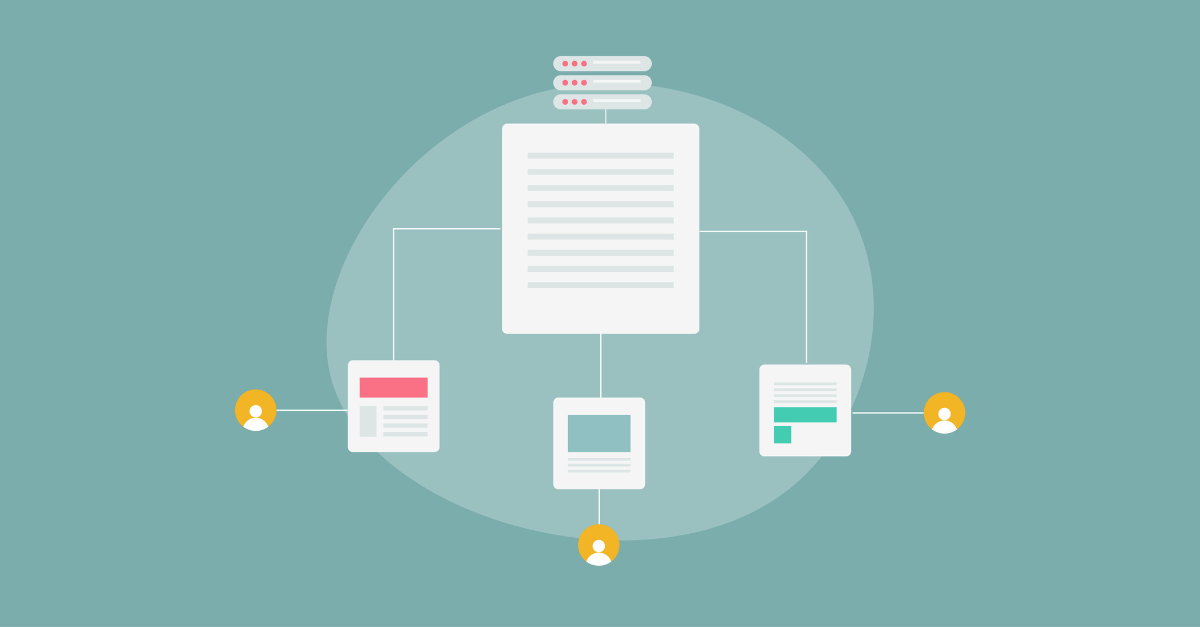What is it?
Google Analytics launched November of 2005 and yet, there are still so many misconceptions about what it is. Is it a giant analytics monster that constantly bombards you with numbers and charts? Or, is it a friendly guide to help you in your quest for finding the elusive conversions. The short answer is: a little of both. Fortunately, there are varying levels of Google Analytics to get acquainted with before getting thrown in the deep end of the analytical pool. For now, let’s just dip our toes in, shall we?
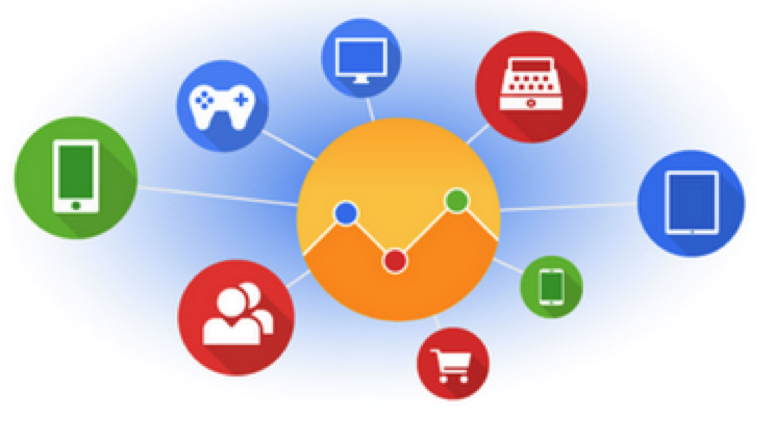
Why should you be using it?
First and foremost, no matter what your title is there is a reason for you to be using Google Analytics. Second, it is one of the most powerful tools you can use to monitor your site…for FREE. From the data-heavy to the content-focused, analytics can bridge the gap between what we think we know about our consumers, and how they actually interact. Think of your analytics data as the stencil that allows you out perfect picture of your market. Everything within that picture can be measured and articulated to give you an accurate idea of how your business is performing and the areas that you can improve in. Below are some key insights you can gain and questions to discover answers to when using the Internet giants program.
Actionable insights into referral traffic:
- How are people getting to your site?
- Which social networks perform better than others?
- Are you missing any major search engine demographics?
Discover your true audience:
- Why do people ACTUALLY come to your site?
- What age group is your demographic group?
- Where does your primary market originate?
Gaps in Content Marketing:
- Is your content “sticky” enough to retain users?
- Are certain topics on your site viewed more than others?
- Which content pieces perform better than others?
And now, for the main event: the different levels of Google Analytics and what you can expect to learn from each of them!
The Good
The best time to get started with Google Analytics was yesterday. However for those of use that were not fortunate enough to predict the future of data and digital marketing, there is still time to play catch up. After you have installed your tracking codes on your site, there are a few key areas that can give you an initial glimpse into your site’s traffic and behavior. First, pay attention to your audience overview (pictured below):
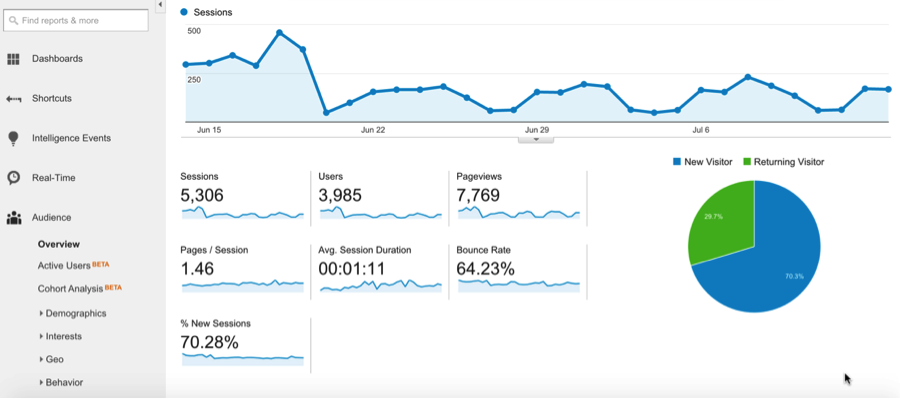
From this view, you can see how many people are coming to your site (Users) in the time period you specify, as well as, how many pages viewed. The pages per session section is an important detail as this reports how many pages are viewed each time a session begins and ends with a user. The average session duration gives you an idea of how long a single user stays on your site before moving on to something else. Be sure to also view your demographics and interests (pictured below) so that you can formulate an initial idea of your audience and demographic group.
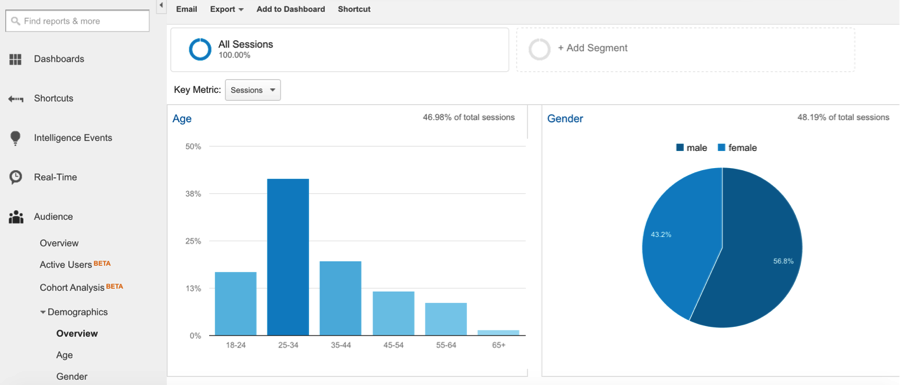
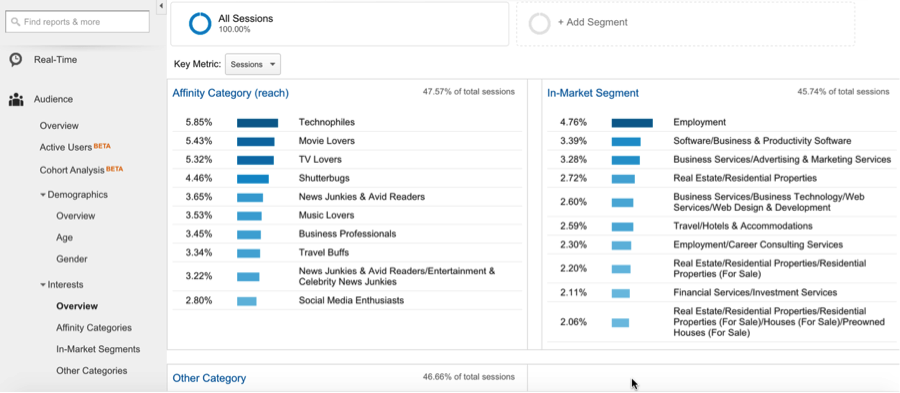
The Bad (the dreaded learning curve)
As with anything new and exciting, eventually you hit a wall. This is the point where a lot of people will stop their Google Analytics knowledge because they think they have seen enough to get a clear idea of who their core consumer is. While that may be true, you are still missing so much of what the software can do. Trust me on this one, fight the curve and make it through to the other side!
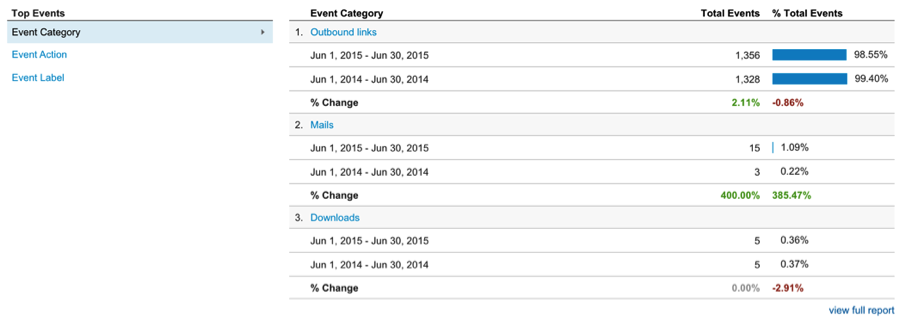
Pictured above is a glimpse of actions taken on your site. This should give you an idea of the types of metrics you can track when youembrace the more complex side of Google Analytics. Setting up event tracking on Google Analytics allows you to track a variety of actions on your site that translate to value for your organization. You can see how many people have downloaded a PDF file or how many outbound links you site has for marketing or networking purposes. When you compare different time periods (we have demonstrated a year over year comparison above), you begin to get a really good idea of how the changes you have been implanting have take effect!
The Ugly (but powerful)
At a certain point you will be face to face with realization that Google Analytics can be an instrumental (and complex) tool that can show you different ways to learn more about your consumers and the way your website performs. With this better understanding of the potential of Google Analytics comes the realization that it is a HUGE rabbit hole. With so many customization and tracking options, you can create custom reports for your designer, your marketing team and your CEO all in one place. You can also use multi-channel conversion funnels (pictured below) to generate an idea of where most of your sales traffic is coming from and which social network is most valuable to your conversion rate.
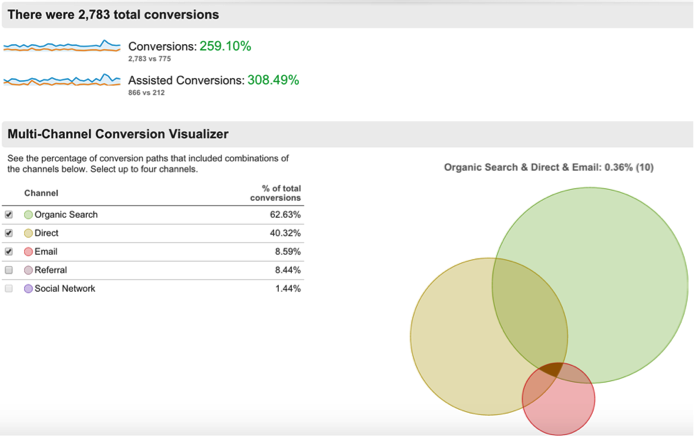
[more]
At this point you are probably sitting there thinking, WOW, how will I ever be able to learn all of the different ways that Google Analytics can help me grow my business? First, start small. Begin with an overview of who your demographic is and begin to develop content that engages with them. Over time, you can begin to implement the more in-depth tools Google has to offer and build a more holistic view. We will continue to create content on how you can use this powerful tool. Subscribe to our emfluence emisghts email newsletter to get our monthly insights sent to your inbox.



